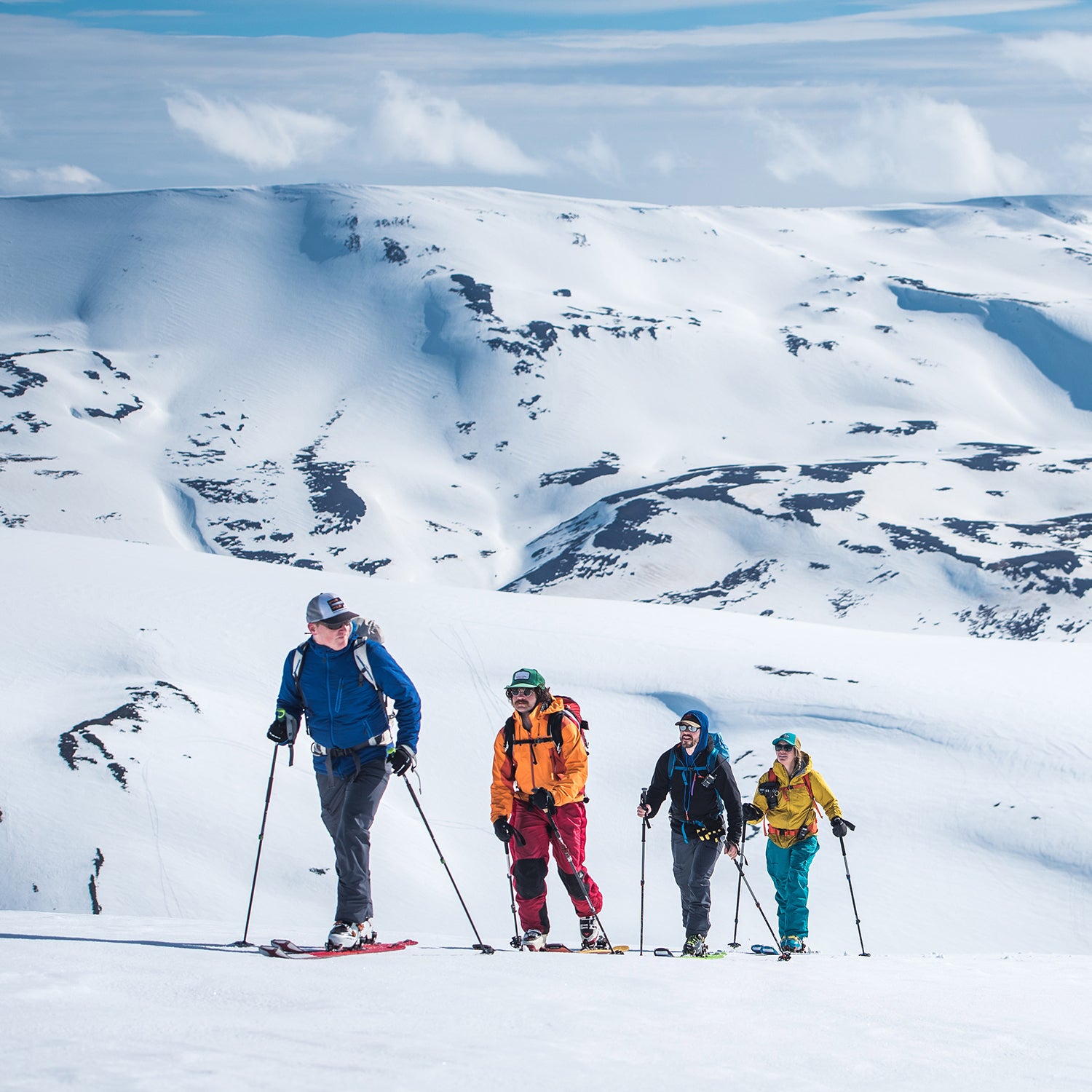On March 15, ski resorts across the country shut down over fears of the spread of coronavirus. It appeared that the ski season, despite plenty of snow, was over. Then everyone started backcountry skiing. In fact, the niche sport is experiencing what could be the biggest bump in users ever.
ÔÇťOur store immediately got overrun,ÔÇŁ says Brendan Madigan, who owns , a backcountry-centric gear shop in Tahoe City, California. ÔÇťWe were doing sales like we only see at Christmas.ÔÇŁ Madigan soon shut down rentals of backcountry gear and, due to crowding in the shop and health concerns over the spread of the virus, he closed the store to in-person sales and switched to phone orders and curbside pickup only.┬á
ÔÇťI still have anxiety over the way weÔÇÖre doing it and the sales weÔÇÖre seeing for backcountry gear,ÔÇŁ Madigan says. ÔÇťShelter in place doesnÔÇÖt mean shelter in place and go ski touring. It means stay in your damn house.ÔÇŁ
Even if┬áyou technically are able to go backcountry skiing and maintain the social-distancing precautions set forth by our public-health officialsÔÇöstaying six feet away on a skin track, driving your own car to the trailhead, standing apart on the summitÔÇöa bigger ethical dilemma┬áremains. If you hurt yourself, youÔÇÖre straining a health care system thatÔÇÖs desperately needed for other patients right now.┬á
Popular backcountry access points, like WyomingÔÇÖs Teton Pass, Lake TahoeÔÇÖs west shore, and UtahÔÇÖs Little Cottonwood Canyon, have seen an uptick in users and major parking issues, according to skiers local to the areas. (Check out the crowded and illegal parking at ColoradoÔÇÖs and .)
In ColoradoÔÇÖs San Juan County, the local sheriffÔÇÖs department recently implemented a that prohibits out-of-town skiers and discourages locals from accessing backcountry spots out of concern for taxing the areaÔÇÖs search and rescue volunteers and first responders in the case of an accident. CaliforniaÔÇÖs Inyo County, on the east side of the Sierra Nevada, has prohibiting high-risk outdoor activity, including backcountry skiing and climbing, that could result in a rescue. As of March 25, those are the first regions to issue formal statements discouraging it.
According to the , 33 recorded avalanches have been triggered by backcountry travelers in Colorado since┬áFriday, 15 of which were large enough to kill a person.┬áOther avalanche centers, like┬á┬áand the┬á, have┬á. ÔÇťAfter we received┬ástay-at-home orders in Washington and Oregon, it seemed like we probably shouldnÔÇÖt be equipping and enabling the public to go into high-risk backcountry environments,ÔÇŁ says Scott Schell, executive director of the Northwest Avalanche Center. ÔÇťThis is our way of contributing to the collective solution we all need to work toward.ÔÇŁ┬á
Plus, Schell added, input from partners like ski resorts and guiding outfitters is now limited, which would impact the quality of forecasts, and his organization doesnÔÇÖt┬áwant to put staff forecasters at risk of exposure to the virus. Ethan Greene, director of the Colorado Avalanche Information Center, said they┬áplan┬áto continue issuing forecasts for now in Colorado, but that they are┬áconstantly evaluating the situation.
Maybe your local ski area allows uphill travel, but that doesnÔÇÖt solve the problem. Hordes of people are congregating in places like Snow King, in Wyoming, and Aspen Snowmass, in Colorado. ThereÔÇÖs no ski patrol, which means thereÔÇÖs no avalanche mitigation, and youÔÇÖre on your own if something goes wrong. Vail Resorts recently closed its Colorado ski areas to uphill traffic, after initially allowing it, as did ColoradoÔÇÖs Loveland Ski Area, , and others.
ÔÇťYou have a lot of people who rarely ski outside of the resort who are now looking for an outlet,ÔÇŁ says Jordan White, president of , the areaÔÇÖs search and rescue organization. ÔÇťMost of these people are being responsible and conservative, but there are always exceptions. We would like to see people making the most conservative choices they have ever made in the backcountry.ÔÇŁ Which┬ámeans if youÔÇÖve never made decisions in the backcountry┬áor ski-toured uphill, now is not the time to start.
So┬áhow do you decide if itÔÇÖs OK to go backcountry skiing? There are a few things to think about before you go. Can you safely ski near your house, or would┬áit involve nonessential traveling? Can you choose terrain thatÔÇÖs ultraconservative to reduce your chance┬áof injury? Do you already have avalanche training, a partner who wouldnÔÇÖt be increasing your risk of exposure, and the proper gear? If youÔÇÖre thinking about skinning at your local resort, check in onÔÇöand respectÔÇöits┬ácurrent policy about uphill travel.
ÔÇťWe all want to go outside,ÔÇŁ says Matt Hansen, communications director for WyomingÔÇÖs Teton County Search and Rescue Foundation and the former editor of Powder magazine. ÔÇťThereÔÇÖs still a ton of snow, and we want to go skiing. But we need to respect the current situation. Embrace the casual. Now is not the time to get after the gnar. WeÔÇÖre all in this together, and itÔÇÖs imperative that the backcountry community do its part to not further stress the system with preventable accidents.ÔÇŁ


